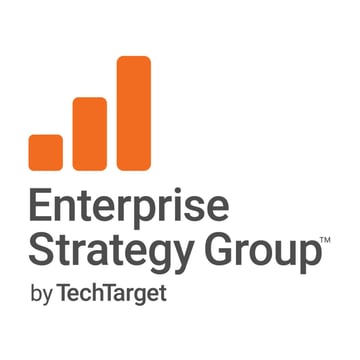59% of small to medium-sized businesses* expect to increase their investment in cybersecurity in the coming year. This increased interest in cybersecurity means IT teams have an excellent opportunity to gain buy-in for security tools and processes that will make their jobs easier. The market is full of automated security solutions that can support lean IT teams by mitigating unnecessary human intervention and accelerating incident response processes.
However, there is no “one-size-fits-all” solution for every IT team, as each will have goals, needs, and constraints specific to their organization. As such, IT teams must identify where their security programs and processes could benefit from additional buy-in and where and how to allocate funds.
When smaller teams can speak with specificity and confidence around their own needs, they increase their chances of gaining the executive team’s trust and collaboration when developing new security strategies, processes, and solutions. Creating this level of specificity comes down to understanding leadership’s POV, which largely prioritizes concrete results and maintaining their bottom line.
Resource-strapped security teams can win over decision-makers by identifying the ROI story of their proposed security strategies and solutions — bridging the gap between technical and economic priorities.
4 Tips for Gaining Cybersecurity Buy-In
Gaining buy-in starts with telling a compelling security narrative to decision-makers. Here are four major components for creating a strong ROI story as you go into conversations with them:
1. Speak their language
To kick off a successful security conversation, IT teams need to think through the leadership team’s values and concerns — and directly speak to them. To put yourself in the executives’ shoes, remember the following:
- They are very busy and focused on many priorities. Identify ways to summarize your security objectives into a brief but meaningful conversation. It helps to start by answering this question: “What is the demonstrable ROI of the security solutions/processes we aim to gain approval for?” Part of this conversation should center around identifying valuable business metrics such as uptime, customer retention and trust, productivity, etc.
- They are highly focused on eliminating unnecessary costs. Focus on the financial concerns that the decision-makers are likely to have and how you plan to address them.
- They want to be engaged. A Gallup survey showed that most leaders welcome the chance to hear from their employees, as 78% of respondents reported actively engaging with their employees. The key is to engage with the right decision-makers. Identify the security champions on the executive team and start with them.
2. Streamline business processes
As you go into conversations with your business’s decision-makers, it’s important to emphasize how the right security tools are an enabler, not a roadblock, to increased productivity. Highlight many of today’s cybersecurity tools can work alongside existing processes and tools with the following features:
- Automation. Security tools can automate critical tasks, such as detecting threats across the environment, containing these threats, or sending alerts to the proper team members.
- Integrations. The right security tool for your organization will also include integrations with your existing tech stacks. Examples of common integrations include tools for IT service management (such as ServiceNow) and cloud service environments (such as AWS, Azure, and Google Cloud Platform).
User-friendliness. Today’s best security tools prioritize usability and simplicity, even for non-security personnel. These user-friendly solutions offer out-of-the-box features that require little to no customized setup.
3. Show the link to compliance
Compliance requirements often drive security-related decisions, as many of today’s businesses must meet external regulations. Plus, many leaders recognize meeting compliance as a valuable business opportunity. According to Christopher M. Steffen, managing research director of EMA, “Compliance is no longer a ‘table stakes’ proposition: comprehensive compliance programs focused on data security and privacy can be the difference in very tight markets and are often a deciding factor for organizations choosing one vendor over another.”
As you go into these conversations, note which specific compliance regulations your executives care most about and focus on how your chosen tools meet these requirements.
4. Emphasize the cybersecurity talent shortage
There’s a good chance that leadership will come into the security conversation with concerns about staffing issues. Finding and training cybersecurity personnel is challenging for many of today’s businesses. According to a 2022 Deloitte survey, 46% of CISOs reported inadequate cybersecurity staffing. In addition, CSO reports workforce shortages in cyber have reached 4 million, despite recruitment efforts.
With this shortage in mind, security teams need to propose tools or processes that are purpose-built for departments of their size, not enterprise solutions that would take more resources or expertise than is feasible. Resource-strapped security teams can win over decision-makers by focusing on options that will extend the efforts of existing resources instead of accruing additional unnecessary costs.
How Blumira Meets Leadership Team Criteria
As a SIEM+XDR solution purpose-built for small to medium-sized organizations, Blumira can meet IT teams’ needs while helping to address and fulfill leaders’ goals. Blumira offers a cybersecurity platform with:
- Straightforward, all-in-one tooling. Our solution combines essential cybersecurity tools — logging, endpoint security, automated 24/7 threat monitoring, detection, and response — into one easy-to-use solution.
- Rapid deployment. Most teams can stand up Blumira with their existing resources and personnel in less than a day.
- Automated response features and guided playbooks. Teams can multiply their efforts by following expert-written procedures and enabling automated threat blocking. They save time and resources by not needing to reinvent the wheel or manually isolate threats every time an incident occurs.
- Threat prioritization. Rather than sending a barrage of alerts to your teams, our platform prioritizes findings and then reports on the most pressing events.
- Advanced reporting. The Blumira platform provides advanced reporting and dashboards with one year of data retention, enabling your organization to demonstrate the ROI to executives or the board and prove compliance to external parties and other stakeholders.
See if Blumira would be a good fit for you and your organization by signing up for free.
*www.helpnetsecurity.com/2023/10/18/smbs-cybersecurity-concern/
More from the blog
View All Posts
Blumira and Cybersecurity Tech Trends
Read More
Blumira Introduces 30-Day XDR Trial, Further Democratizing Access to Cybersecurity Solutions
Read More
Strategies for Supercharging Small Security Teams
Read MoreSubscribe to email updates
Stay up-to-date on what's happening at this blog and get additional content about the benefits of subscribing.